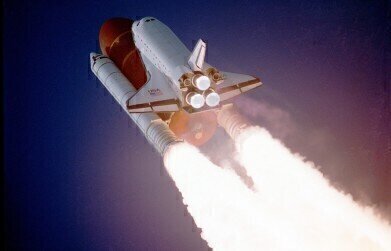Environmental Laboratory
Australian Inventor Beats NASA Record for Fuel Efficiency
Oct 07 2015
A PhD student at the University of Sydney has developed a revolutionary new ion engine which has smashed the previous fuel efficiency record. Patrick Neumann presented his “Neumann Drive” at the 15th Australian Space Research Conference last week and explained how its propulsion mechanism was 30% more efficient than NASA’s HiPEP system.
According to Neumann, the drive would be capable of going to “Mars and back on a tank of fuel” – although it’s more likely to be used to ferry cargo and satellites around in space in the near future.
Ion Thrusting Technology
Standard propulsion works via the combustion of fuel, which achieves initial lift-off. This is followed by more fuel combustion to escape the Earth’s gravity – then once the craft is in space, all that is needed is to coast.
However, ion thrusters work by rapidly spewing out a proliferation of particles in order to push the craft forwards. Instead of larger, fewer pushes, it uses one long series of tiny propulsions, resulting in a longer acceleration time.
NASA’s own high power electric propulsion (HiPeP) system is capable of 9,600 seconds of specific impulse (the measure of thruster efficiency), Neumann’s drive smashed that record. Fuelled by magnesium (as opposed to the xenon gas used by NASA), it achieved as much as 14,690 seconds. That an independent student could outstrip the largest, most powerful and most advanced space technology organisation on the planet is a massive achievement in itself. In fact, Neumann has already received recognition for his efforts in innovation, receiving the Australia Asia Award in 2012 from Prime Minister Julia Gillard herself.
Another Spacecraft Needed
Although Neumann’s drive is incredibly fuel efficient, it’s not powerful to lift off from the Earth’s atmosphere on its own. Indeed, the force generated by his ion thrusters would be roughly equivalent to the amount of pressure exerted on the palm of your hand by a chunk of change. In space, where there’s no gravity, this is enough to achieve propulsion; on Earth, it most certainly isn’t.
However, if coupled with another, more powerful craft in order to reach space, the Neumann Drive could be very useful indeed in ferrying materials and satellites around space. Currently, once satellites run out of fuel, they become pray to gravitational drag and are rendered effectively useless.
Another added advantage is the type of fuel which Neumann utilises. Whereas NASA’s method involves the use of difficult-to-find xenon gas, Neumann has achieved impressive results with far more common materials, including the metals titanium and aluminium. Furthermore, magnesium is found in asteroids in space, meaning there is potential for the craft to refuel from dead satellites, which would both provide it with more power and clean up the aforementioned space trash simultaneously.
Mission to Mars?
Although Neumann’s assertion that the engine could reach Mars and return on a single tank of fuel was tongue in cheek, there’s no denying the advantages that such fuel efficient technology could bring.
“Using very rough, very early calculations we think 20kg of magnesium could get a 100kg ship to Mars and back. It would take three to five years and there will be some weight for the craft, solar panels and communications, but we think there would be 20 kilograms left over for the payload,” Neumann explained to IFL Science. “With a higher thrust fuel in a Neumann Drive you could do it in nine to 11 months, but the fuel tank would be empty when you got there.”
In theory, the Neumann drive would not be able to transport astronauts to the red planet from Earth but could provide propulsion once in space – or even just bring supplies to men already out there. With other simulations and experiments on a potential Mars mission in an advanced state, it might just be possible that we could send humans to explore our neighbour in the foreseeable future. Inventors like Neumann only bring that possibility closer to a reality.
Digital Edition
IET 34.2 March 2024
April 2024
Gas Detection - Biogas batch fermentation system for laboratory use with automatic gas analysis in real time Water/Wastewater - Upcycling sensors for sustainable nature management - Prist...
View all digital editions
Events
Apr 30 2024 Melbourne, Australia
Apr 30 2024 Birmingham, UK
May 03 2024 Seoul, South Korea
May 05 2024 Seville, Spain
May 06 2024 Minneapolis, MN, USA


















